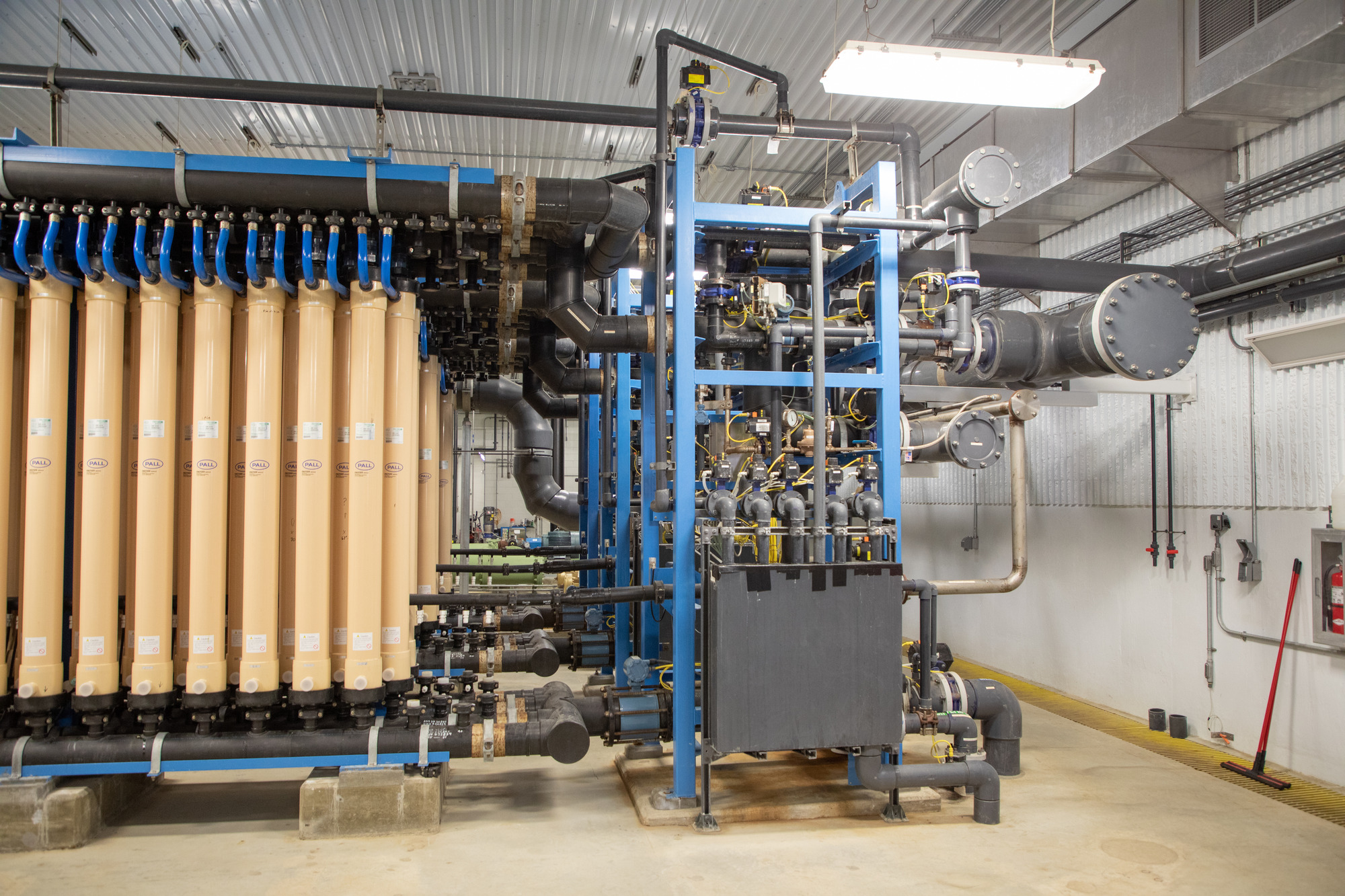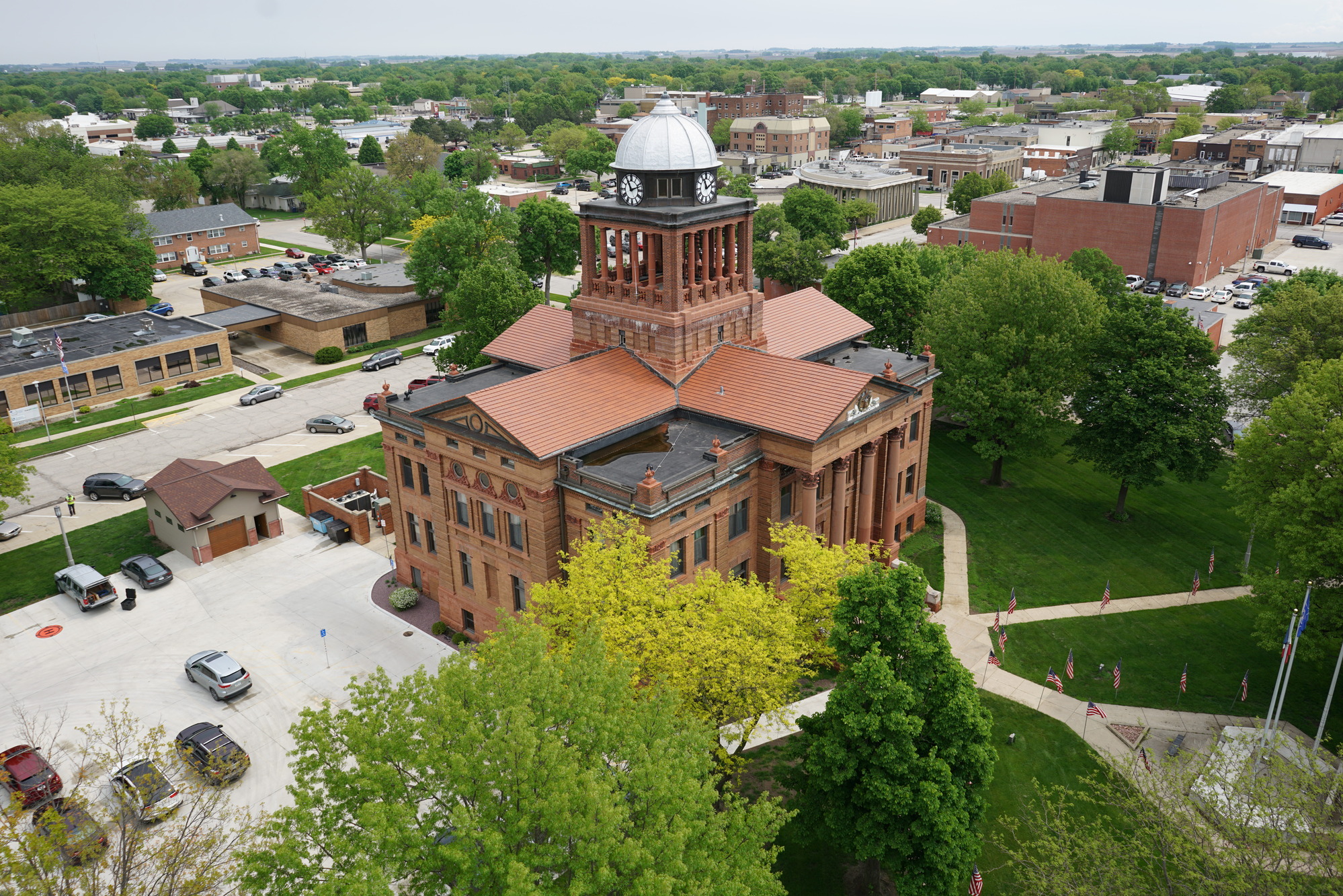Improving Drainage Systems + Protecting the Water Quality of Fairmont’s Chain of Lakes

The long-term impact of agricultural drainage on water quality can be mitigated with properly designed improved drainage systems. Using a nutrient treatment train technique, ISG is providing additional water storage, nutrient reduction, velocity reduction, protection against streambank erosion, and overall water quality improvements to Fairmont’s Chain of Lakes.
For many years, ISG has served as Martin County's trusted drainage engineer. In 2018, ISG took on a unique challenge in response to the request from several landowners to assess the needs and costs associated with enhancing the Martin County Ditch 28 (CD 28) drainage system. The feasibility report outlined the system's capacity for improvement and highlighted the potential challenges, leading to a petition to the Martin County Drainage Authority for improvements to the CD 28 system.
Listening + Responding to Water Quality Concerns

Following a preliminary hearing, multiple stakeholders, including various agencies, landowners, and the City of Fairmont, voiced a need for more integration of water quality components into the project. The system ultimately discharges into Cedar Creek, a public water , and Amber Lake, part of the Fairmont Chain of Lakes, which serves as the City's source of drinking water. Recent years had witnessed increased concerns with elevated nitrate concentrations in the City's drinking water, a potential concern for public health. Furthermore, harmful algal blooms (HABs) had been identified in the Fairmont Chain of Lakes, raising potential health risks stemming from HAB toxins, whether through skin contact, inhalation of water droplets, or ingestion.
Funding Aimed at Improved Drinking Water

With a vision to address these pressing issues, ISG assisted with the development of a grant application for funding through the State of Minnesota Clean Water Fund program. The aim of the grant was to design and construct a sediment and nutrient treatment train, comprising an expansive 10-acre nutrient treatment wetland and an 8,000-linear-foot two-stage ditch located upstream of Amber Lake. The overarching goal was to reduce nitrate levels by 12,827 pounds annually, reduce total phosphorus by 463 pounds per year, and mitigate sediment runoff by 28.7 tons annually, all to the benefit of Amber Lake and the downstream Chain of Lakes. Importantly, this project aligns with the Martin County Local Water Plan's focus on surface water to safeguard surface water quality and quantity. The initiative also merges with the Water Plan's broader objectives by curbing nitrate, phosphorus, and sediment loads to Amber, Hall, and Budd Lakes—water bodies that are listed on the EPA 303(d) roster as impaired due to excessive nutrient levels. Additionally, the project provides permanent storage to mitigate annual runoff and temporary storage to reduce peak flows and minimize erosive discharges.
Nutrient Treatment Train Strategy

The project was awarded a substantial $880,000 in Clean Water Funds in 2021 for the design and construction of the water quality features. ISG redesigned the original improvements, integrating a treatment train of water quality elements. These included expanding the existing 5-acre pond from a conventional stormwater surge pond into a 10-acre nutrient treatment wetland. This wetland provides a site for sedimentation and possesses the capacity to retain peak runoff for over 48 hours—an essential timeframe for nutrient uptake to begin. This water quality component is important, as without it, the denitrification process and the overall biology of the system would remain unchanged.
Another vital component of the treatment train will involve the conversion of an existing trapezoidal ditch into a two-stage ditch. In this case, the elevations of the water need to activate the floodplain several times a year, depending on rainfall, to ensure optimal nutrient removal and the natural formation of processes. ISG redesigned all aspects of the two-stage ditch's hydraulics to ensure that the water levels fit into the system.
The combined effect of this nutrient treatment train not only provides additional water storage but also reduces nutrients, velocity, and streambank erosion—resulting in comprehensive enhancement of water quality for the area.
Stacking Projects to Save Money

The integration of the nutrient treatment train into the larger CD 28 improvement project, translates to cost savings for the landowners. By working together to leverage the CD 28 project and the grant-funded efforts, construction costs are optimized, and the effectiveness of the treatment train is maximized all at once.
With the final engineering report now approved, construction will begin in the fall of 2023. Tangible progress will be evident as this unique project takes shape, promising a brighter and healthier future for Martin County and its water resources.
Related Articles


Creating Learning Options for Water/Wastewater Operators
Public works systems are crucial for community well-being and functionality as they contribute to the quality of life for residents. With an in-depth understanding of regulations, environmental conditions, processes, and procedures, ISG aims to develop strategic partnerships with municipalities and deliver right-sized solutions for their unique systems.

.webp)
Navigating the MS4 Permit Program: How ISG Supports Communities Every Step of the Way
The management of stormwater runoff is a pressing concern for cities across the nation, and the Municipal Separate Storm Sewer System (MS4) permit program is a critical framework designed to protect water quality and our natural resources.


Optimize Maintenance + Reveal Opportunities with Facilities Assessments
The Clay County Board of Supervisors (County) knew they needed to address facility repairs in their Administration Building, Courthouse, and General Services Center. While maintaining public buildings does not generate excitement, County leaders recognized that deferring upkeep of public facilities can cost more in the long run if left unaddressed and may result in limiting other more impactful projects.

Creating Flood-Resilient Communities: A Case Study in Floodplain Management
In the land of 10,000 lakes, Minnesotans love to live near and play in our abundant water systems. But the effects of population growth, land use development, and climate change pose challenges within floodplain areas, contributing to persistent flooding issues.


.svg)




